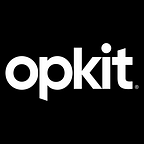Health insurance verification is the process of determining whether a patient’s insurance plan is active and in- or out-of-network, and whether it includes any “benefits” (copays, deductibles, etc.) that are applicable to the services being rendered.
This process ensures that the provider ultimately gets paid-out by the patient’s insurance carrier. If performed incorrectly, the insurance carrier may reject the provider’s claim, and the provider may subsequently hold the patient responsible for payment — a negative experience for all parties.
Therefore, it is essential that providers perform a careful insurance verification step in advance of the patient’s appointment or procedure.
(Separately, the provider should also make sure that they possess the necessary credentials to legally provide care for this patient; for example, they should be licensed to perform medicine in the patient’s state of residence. This also depends on the type of provider — MD, PA, NP, etc.)
There are five main ways that a provider can perform insurance verification:
- Calling the insurance carrier
- Accessing the insurance carrier’s web portal
- Running an “eligibility check” using an EMR
- Running an “eligibility check” using a clearinghouse website
- Asking the patient to furnish this information themselves
Each method/tool comes with its own advantages and disadvantages.
Calling the insurance carrier
Advantages:
- Returns accurate, up-to-date benefits information (“straight from the source”)
- Supports the ability to inquire about benefits relating to specific CPT codes; this is extremely useful and, surprisingly, not always supported by other tools/methods
- Allows the provider to ask directly about their “network status” (whether they are considered in- or out-of-network for this patient’s plan)
- Free
Disadvantages:
- Extremely tedious and time-consuming; it can take 30 minutes or more to verify a single patient’s insurance
Accessing the insurance carrier’s web portal
Advantages:
- Returns accurate, up-to-date benefits information (“straight from the source”)
- May or may not support the ability to inquire about benefits relating to specific CPT codes
- Fast; results are delivered instantaneously
- Free
Disadvantages:
- The provider must visit a different website for each insurance carrier; this can be inconvenient; it is especially inconvenient for providers who deal with many different insurances, or accept out-of-network insurance
- Does not indicate network status; the provider must determine this on their own, based on their own interpretation of the patient’s insurance and the provider’s insurance contracts
- Clunky interface
Running an eligibility check using an EMR*
*An “eligibility check” is an electronic inquiry to an insurance carrier about a specific patient’s plan. The results of an an eligibility check include the status of the patient’s plan (active/inactive), as well as any benefits relating to the service type that was supplied in the check. This system is based on a technology called X12 EDI 270/271. To learn more, see https://en.wikipedia.org/wiki/ASC_X12 and https://x12.org/codes/service-type-codes.
Advantages:
- Tightly-integrated with charting, scheduling and billing software
- Fast; results are delivered instantaneously
- “Free”, in the sense that it comes bundled with the rest of the provider’s software
Disadvantages:
- Generally does not support the ability to inquire about benefits relating to specific CPT codes
- Does not indicate network status
- Clunky interface
Running an “eligibility check” using a clearinghouse website*
*Examples of clearinghouse websites include Availity and Waystar.
Advantages:
- Fast; results are delivered instantaneously
- Free
Disadvantages:
- Not integrated with other software tools
- The provider must “enroll” with each insurance carrier they want to verify insurance with; enrollment might involve submitting electronic or paper forms and can sometimes sometimes take days
- Generally does not support the ability to inquire about benefits relating to specific CPT codes
- Does not indicate network status
- Clunky interface
Asking the patient to furnish this information themselves*
*To find this information, patients can ask their insurance carrier or employer.
Advantages:
- The provider doesn’t have to deal with insurance verification whatsoever; this saves time and headache, and frees-up staff to focus on providing care
Disadvantages:
- There is significant risk of rejected claims
- The burden of insurance verification is shifted on to the patient, which may cause them to seek care elsewhere
It’s worth noting that most of the above tools/methods do not assist the provider with determining network status, which is, of course, an extremely important part of insurance verification.
Ultimately, the decision about which insurance verification tool/method is appropriate for a given provider depends in large part upon the provider’s unique circumstances.
Do they have high volume and simple billing codes? They should opt for a fast, convenient approach, such as an EMR or a clearinghouse website.
Do they accept out-of-network insurance? They should avoid the insurance carrier web portal approach, which would require them to spend time Googling each new carrier.
Are their patients especially loyal or affluent? They might be able to get away with asking them to perform insurance verification themselves — and charging patients when they fail to do this properly!
We hope this introduction to verification tools and methods serves as a useful guide for providers who want to establish or streamline their insurance verification processes.
